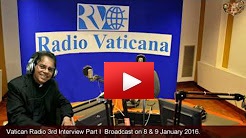Encyclopedia of Syriac chants in the Syro Malabar Church
Guide to Syriac Transliteration
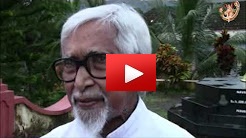 Aramaic Project - Part 1A: Fr. Thelly recites the Lord's Prayer in Aramaic
Aramaic Project - Part 1A: Fr. Thelly recites the Lord's Prayer in Aramaic
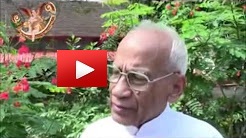 Aramaic Project - Part 2A: Aramaic Projet-Part 2A. Fr. Charles Pyngot sings Qaddisa Alaaha
Aramaic Project - Part 2A: Aramaic Projet-Part 2A. Fr. Charles Pyngot sings Qaddisa Alaaha
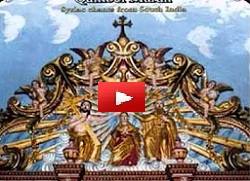 Aramaic Project-Part 4A. .Fr. Augustus Thekknath, CMI. Melody of Huthamma (Final Blessing)
Aramaic Project-Part 4A. .Fr. Augustus Thekknath, CMI. Melody of Huthamma (Final Blessing)
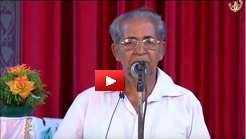 Aramaic Project-Part 5A. "Marayor paawe." A Tamil hymn to the tune of Bar Mariam. A musical treasure
Aramaic Project-Part 5A. "Marayor paawe." A Tamil hymn to the tune of Bar Mariam. A musical treasure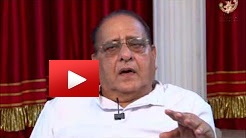 Aramaic Project-Part 6A. "B'edaa d'yawman." Hymn in honor of the Blessed Virgin.
Aramaic Project-Part 6A. "B'edaa d'yawman." Hymn in honor of the Blessed Virgin.
 Aramaic Project-Part 6D.Litany of the BVM in Syriac. Translated from Latin.
Aramaic Project-Part 6D.Litany of the BVM in Syriac. Translated from Latin.
 Part 10c. Talak Ruha (Talaak Ruha) by Rebecca
Part 10c. Talak Ruha (Talaak Ruha) by Rebecca
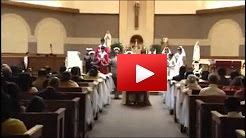 Part 15B. Aramaic Project-Part 21A: Bishop Jacob Angadiath congratulates children for singing in Syriac
Part 15B. Aramaic Project-Part 21A: Bishop Jacob Angadiath congratulates children for singing in Syriac
Contrary to common knowledge, India is one of the very few countries in the world that has a sound connection (pun intended) to the very source of Christianity. The St. Thomas Christians in India trace the origin of their faith to the preaching of St. Thomas the Apostle in the Aramaic language, the mother tongue of Jesus and his disciples. In other words, the Christian faith reached India before Christianity became a religion. It also means that the early Christians in India received the Gospel in the original language, long before it was translated into Greek by the four evangelists.
Eventually, the Christian liturgy that developed in Syriac as the Christian Aramaic came to be known in the early Christian era) flourished in South India. Early Christian chants by such saintly poets as St. Ephrem the Syrian (d. 372) became part of the Christian experience in this part of the world. By the fifth century, Syriac branched into East Syriac (also known as Chaldean) and West Syriac (Antiochene). They represented two different pronunciations of the same Syriac alphabet, as well as two different theologies, liturgical traditions, and ways of thinking.
In the course of the tumultuous history of the St. Thomas Christians, the Antiochene liturgy in West Syriac also found a home in India in the eighteenth century. Among the St. Thomas Christians, the Orthodox and Jacobite Churches use the Antiochene liturgy in West Syriac, and the Syro Malabar Church and the Church of the East use the Chaldean liturgy in East Syriac. Meanwhile, all these churches adapted their liturgies and other aspects of faith celebration to the Indian context. In the 1950s, the Syriac churches in India moved toward vernacularization of their liturgies into Malayalam, the language of Kerala, where most Syriac Christians live. In the process, the Orthodox and Jacobite Churches took steps to retain several prayers and chants in the original Syriac language; and, more importantly, learning of the Syriac language continued to be a part of priestly formation. The Syro Malabar Church, however, took a complete turn toward Malayalam; training in the Syriac language ceased to be mandatory for priests. Consequently, the East Syriac language of the Syro Malabar Church may now very well be added to the list of endangered languages in the world.
This encyclopedia contains chants from the East Syriac tradition of the Syro Malabar Church. According to Rev. Dr. Koonammakkal Thoma Kathanar, a scholar of the Syriac tradition in India, the East Syriac of the Syro Malabar Catholics is the closest in pronunciation to the Galilean Aramaic that Jesus and his disciples spoke. For that reason, preserving the sound of this language before it is completely erased out of memory has become imperative.
The Syriac music repertory of the Syro Malabar Church consists of four categories of chants: (1) chants from the Chaldean liturgy that the Syro Malabar Church inherited, starting from the fourth century; (2) chants composed by indigenous scholars in Kerala (for example, Fr. Chandy Kadavil, a.k.a. “Alexander the Indian 1588-1677) composed in Kerala; (3) Syriac translation of Latin chants that were composed anew in Kerala, starting from the sixteenth century, after the arrival of the Portuguese missionaries; (4) and new melodies that were composed to existing texts of Mass for solemn celebration, starting from circa the seventeenth century.
An important part of the first category of chants are the melodies of the liturgy of the Hours (Husmann 1967). These melodies came to Kerala along with their respective texts and survived there through oral tradition. Due to disuse for over fifty years, quite a number of these melodies have faded from memory. Currently, about 23 melodies have been retained in the Malayalam version of the Hours (see Abel 1967-2000; Palackal 2005).
We have information on only a handful of melodies from the second category of chants. It is our hope that ongoing research will bring to light more chants in this category. We have a large number of chants available from the third category. Luckily, our resource persons continue to remember many of those melodies, and we shall attempt to make them available on this page. The melodies of the solemn high mass in Syriac belong to the fourth category of chants. Melodies of these chants were composed in Kerala; those melodies show a considerable influence of the Latin chant melodies. The Latin chant, “Exultet” from the Easter Vigil seems to have been a favorite melody for Syro Malabar Church priests to sing Syriac texts (see example). Many of these chants have multiple melodies, and put together they may run into a huge collection. There are a few musically talented priests and choir leaders still alive, who celebrate solemn high mass in Syriac occasionally, or others who can recall melodies even though they do not celebrate mass in Syriac at present. We intend to contact as many of them and collect as many melodies as possible.
Overall, the Syriac chant repertory of the Syro Malabar Church contains multiple stories of centuries-long cultural interactions between India, West Asia, and Europe (Palackal 2004). They are also repositories of Eastern Christian theology and the early Christian way of thinking (Pathikulangara, Varghese 1998). That the melodies of these melodies (especially those in the first category) have survived in Kerala is a matter of great musical and historical importance (Palackal 2004). Linguists, musicologists, cultural historians, and historians of India may have to take these chants into account to reconstruct the history of Early Christian music as well as music in India. Our goal is to document as many memories and melodies from the transitional generation that lived through the transference of the Syro Malabar liturgy from Syriac to Malayalam, in 1962. Our resource persons are mainly church choir members and clergy who were active in the 1950s in the Syro Malabar Church in Kerala. Our plan is to provide chant texts in the original Syriac script, transliterations in the Latin and Malayalam scripts, and translation in English.The Nasrani Foundation (www.nasrani.org) has kindly agreed to provide the text in the Syriac script. We welcome suggestions and corrections from our viewers; please send them to info@thecmsindia.org. Obviously, this is an ambitious and expensive project. We shall be grateful to viewers for any donations that they can make (please click here)
References
- Abel, C. M. I. Fr. (Fr. Abel Periyappuram). 1967 2000. Kānōna namaskāram, ranṭāmpustakam: nōmbu kālam, uyiṛppukālam (Canonical Prayers, Book II: Seasons of Fasting Lent and Resurrection Easter). Printed at Cherry's Printers, Kaloor, Kochi. Published by the author.
- Husmann, Heinich, ed. 1967. Die Melodien des Chaldaischen Breviers Communenach den Traditionen Vorderasiens und der Malabarküste. Orientalia Christiana Analecta, no. 178. Rome: Pontificum Institutum Orientalium Studiorum.
- Palackal, Joseph J. 2004. “Interface Between History and Music in the Christian Context of SouthIndia.” In Christianity and Native Cultures: Perspectives from Different Regions of the World, edited by Cyriac Pullappilly, et al., 150-161. Notre Dame, Indiana: Cross Cultural Publications.
- Palackal, Joseph J. 2005. Syriac Chant Traditions in South India. Ph. D. dissertation. City University ofNew York.
- Palackal, Joseph J 2015. “The Survival Story of Syriac Chants among the St. Thomas Christians in south India.” In The Oxford Handbook of Music and World Christianities, edited by Jonathan Dueck sand Suzel Reily, 440-460. New York: Oxford University Press. Pathikulangara, Varghese. 1998. Qurbānā: The Eucharistic Celebration of the Chaldeo-Indian Church. Kottayam: Denha Services.
Dr. Joseph, J. Palackal, & Felix Simon
For TheCMSIndia.org
 Aramaic Project-Part 18A Solemn form of the Lord's Prayer with Thrice holy and doxology
Aramaic Project-Part 18A Solemn form of the Lord's Prayer with Thrice holy and doxology
 Aramaic Project-Part 18D. Melody of "Pagare damsiha." Anthem of the Mysteries
Aramaic Project-Part 18D. Melody of "Pagare damsiha." Anthem of the Mysteries
 Aramaic Project-Part 18F Melody of Holy, Holy, Holy in Syriac
Aramaic Project-Part 18F Melody of Holy, Holy, Holy in Syriac
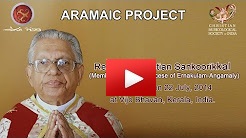 Aramaic Project-Part 25A. Comparison of the melodies of “Rahem alai alaaha”
Aramaic Project-Part 25A. Comparison of the melodies of “Rahem alai alaaha”
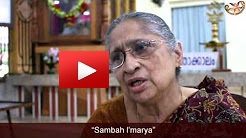 Aramaic Project-48B.Melody of "Sambah l'maarya." Ammini John Anamthuruthil. Palluruthy. Kochi
Aramaic Project-48B.Melody of "Sambah l'maarya." Ammini John Anamthuruthil. Palluruthy. Kochi
 Aramaic Project-50."Suwhalaawa." Bilingual singing in Syriac and Malayalam. Commemoration Hymn
Aramaic Project-50."Suwhalaawa." Bilingual singing in Syriac and Malayalam. Commemoration Hymn
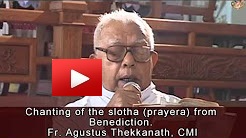 Aramaic Project-51c.Reenactment of Holy Holy Holy On Pesaha Thursday before 1962
Aramaic Project-51c.Reenactment of Holy Holy Holy On Pesaha Thursday before 1962
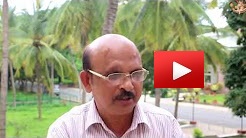 Aramaic Project-52. Melody of "M’haymneenan" from the Creed. Sebastian Menachery
Aramaic Project-52. Melody of "M’haymneenan" from the Creed. Sebastian Menachery
 Aramaic Project-54b. Fr. Jose P. Kottaram. Requiem melody of “Sliwâ dahwâ lan ” from Raza
Aramaic Project-54b. Fr. Jose P. Kottaram. Requiem melody of “Sliwâ dahwâ lan ” from Raza
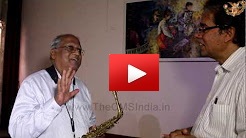 Aramaic Project-56.Johny P. David plays “Šambah lešan” on Alto saxophone
Aramaic Project-56.Johny P. David plays “Šambah lešan” on Alto saxophone
 Aramaic Project-57. Melody of Puqdankon. Fr. Paul Kodamullil
Aramaic Project-57. Melody of Puqdankon. Fr. Paul Kodamullil


